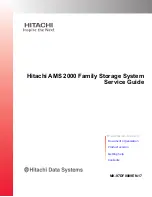
Parameter Description
Hibernatio
n mode
l
N+1
: One backup PSU is required. For example, if a chassis is configured
with six PSUs and only two PSUs are required to supply sufficient power
to the entire chassis, the number of PSUs that can be hibernated is
calculated as follows: 6
–
(2 + 1) = 3
l
N+N
: N backup PSUs are required. For example, if a chassis is
configured with six PSUs and only two PSUs are required to supply
sufficient power to the entire chassis, the number of PSUs that can be
hibernated is calculated as follows: 6
–
(2 + 2) = 2
NOTE
The management module implements PSU hibernation based on 50% of the PSU power
according to factors such as the PSU working efficiency, power conversion rate, and
electrical safety.
For example, if the total required power of the server is 3000 W and six 3000 W PSUs
are configured with each PSU consuming 1500 W, only two PSUs are required. If N+N
PSU hibernation mode is used, two PSUs are working, two PSUs are standby, and the
remaining two PSUs are hibernated.
2.5.2 AC PSU
This section describes features of AC PSUs.
Function
The E9000 provides six PSUs in N+1 redundancy, N+N redundancy, or non-redundancy
mode. Each PSU centrally supplies power to the chassis and supplies 12.3 V DC power to
each slot. Refer to
2.5.4 PSU Configuration Policies
and choose a PSU redundancy mode
according to the maximum chassis power.
PSUs provide short circuit protection. PSUs that support dual input live wires provide bipolar fuse.
Appearance
Figure 2-12
Appearance
The E9000 supports the 2000 W AC Platinum PSUs (EPW2000
–
12A), 2000 W AC
Titanium PSUs (PAC2000S12–TE), and 3000 W AC Platinum PSUs (EPW3000
–
12A).
E9000 Server
User Guide
2 Overview
Issue 25 (2019-11-30)
Copyright © Huawei Technologies Co., Ltd.
17














































